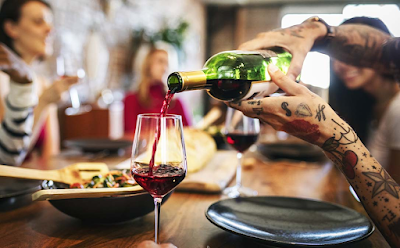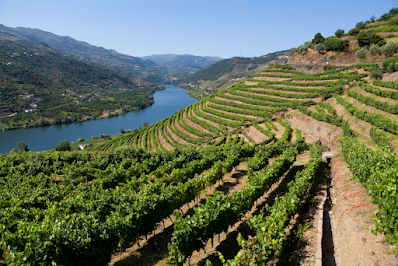Wine, often described as a cultural artifact and a symbol of sophistication, is much more than a beverage. It represents an intricate interplay of agriculture, commerce, and culture. The field of wine economics examines the production, distribution, and consumption of wine through the lens of economic principles, making it a fascinating subject for students and professionals alike. This overview explores the core aspects of wine economics, highlighting its significance in understanding the global wine industry.
The Scope of Wine Economics
Wine economics encompasses a broad spectrum of topics, from vineyard management and production costs to pricing strategies, trade policies, and consumer behavior. It is an interdisciplinary field that draws on insights from agricultural economics, business, and even environmental studies. Key areas of study include:
Production Economics
- Examining vineyard operations and winemaking processes.
- Assessing costs, such as labor, land, equipment, and raw materials.
- Evaluating the impact of weather, climate change, and terroir on yield and quality.
Market Dynamics
- Analyzing supply chains from producers to consumers.
- Investigating pricing strategies influenced by brand, quality, and region of origin.
Consumer Behavior
- Understanding how factors like culture, income, and education affect wine preferences.
- Exploring the psychology behind wine branding and labeling.
Trade and Policy
- Studying the effects of international trade agreements, tariffs, and subsidies.
- Addressing regulatory frameworks like appellation systems (e.g., AOC in France, DOC in Italy).
The Economics of Wine Production
Wine production is capital-intensive, with significant investment in land, equipment, and skilled labor. The concept of economies of scale is crucial in understanding how large-scale producers, like those in California or Australia, manage costs more effectively than boutique wineries. However, smaller wineries often emphasize quality and exclusivity, commanding higher prices for premium products.
Climate and geography play a pivotal role. Regions like Bordeaux, Napa Valley, and Tuscany owe their reputations to unique terroirs, which combine soil, topography, and climate. However, climate change poses risks such as shifting growing seasons and increased susceptibility to pests and diseases. These challenges compel economists and industry professionals to explore adaptive strategies and sustainable practices.
Wine Pricing and Value Perception
Pricing in the wine industry is a fascinating blend of economics and perception. While production costs set the baseline, additional factors such as branding, reviews, and awards significantly influence pricing. The concept of price elasticity of demand is evident in wine markets: high-end wines often face inelastic demand, where consumers are willing to pay premium prices for perceived quality or prestige.
Marketing strategies also play a key role. For instance:
- Geographic Indications (GI): Wines labeled by region (e.g., Champagne) often command higher prices.
- Aging Potential: Wines with documented aging potential are viewed as investments, especially in auction markets.
The Global Wine Market
The global wine market is a dynamic ecosystem shaped by evolving consumer preferences and geopolitical events. Traditional producers like France, Italy, and Spain dominate in volume and reputation. However, New World wine regions—including the United States, Australia, and Chile—have rapidly expanded, challenging Old World dominance by offering innovative styles and competitive pricing.
Key Trends:
- Sustainability: Rising demand for organic and biodynamic wines reflects growing environmental awareness.
- Technology Integration: Data analytics, precision agriculture, and online retailing are revolutionizing the industry.
- Emerging Markets: Countries like China and India are becoming significant consumers, altering global trade dynamics.
Wine Economics and Consumer Behavior
Understanding why consumers choose certain wines is vital for producers and marketers. Factors influencing consumer behavior include:
- Cultural Influences: Preferences vary by region, with some cultures favoring red wines while others prefer whites or sparkling varieties.
- Economic Factors: Income levels and purchasing power significantly affect choices, with luxury wines serving niche markets.
- Social Trends: Millennials and Gen Z are driving demand for innovative packaging and ethical production practices.
Challenges and Opportunities
Despite its resilience, the wine industry faces challenges, including:
- Climate Change: Adapting to environmental changes without compromising quality.
- Regulatory Barriers: Navigating complex import/export laws and regional standards.
- Market Saturation: Standing out in a competitive market with thousands of labels.
Opportunities lie in technological advancements, such as AI-driven marketing and blockchain for supply chain transparency. Moreover, the rising popularity of wine tourism offers a unique avenue for revenue diversification.
Conclusion
Wine economics provides invaluable insights into one of the world’s oldest and most dynamic industries. For students, it offers a rich area of study blending theory and practice. For professionals, it equips them with tools to navigate and innovate in a competitive market. As the industry evolves, understanding its economic foundations will remain essential to fostering growth and sustainability.
By examining wine through an economic lens, we not only appreciate its cultural and sensory appeal but also its profound impact on global markets, livelihoods, and the environment.





















.png)